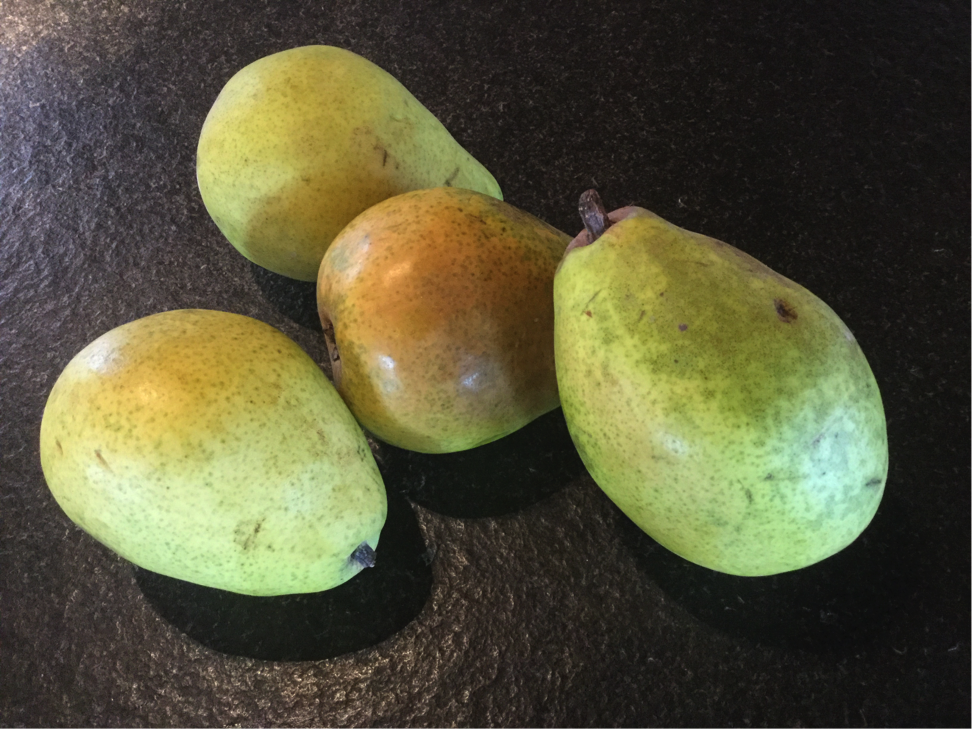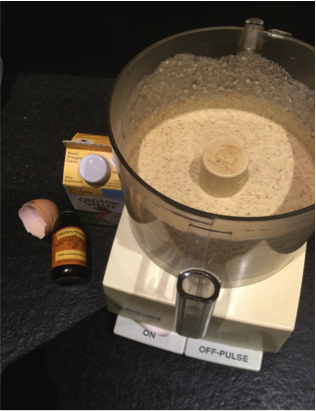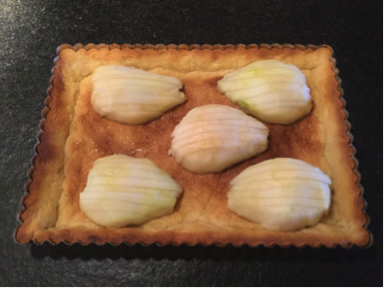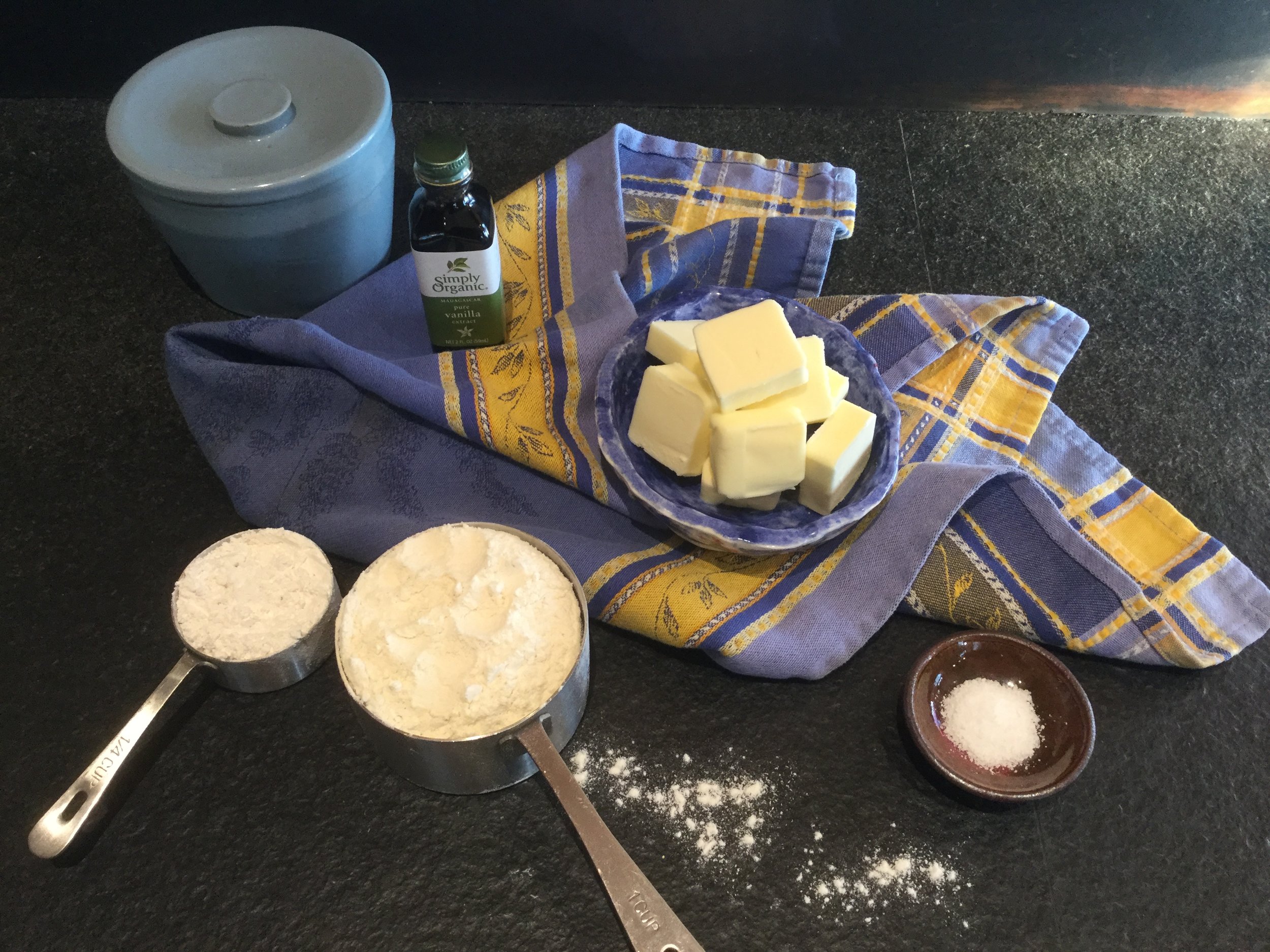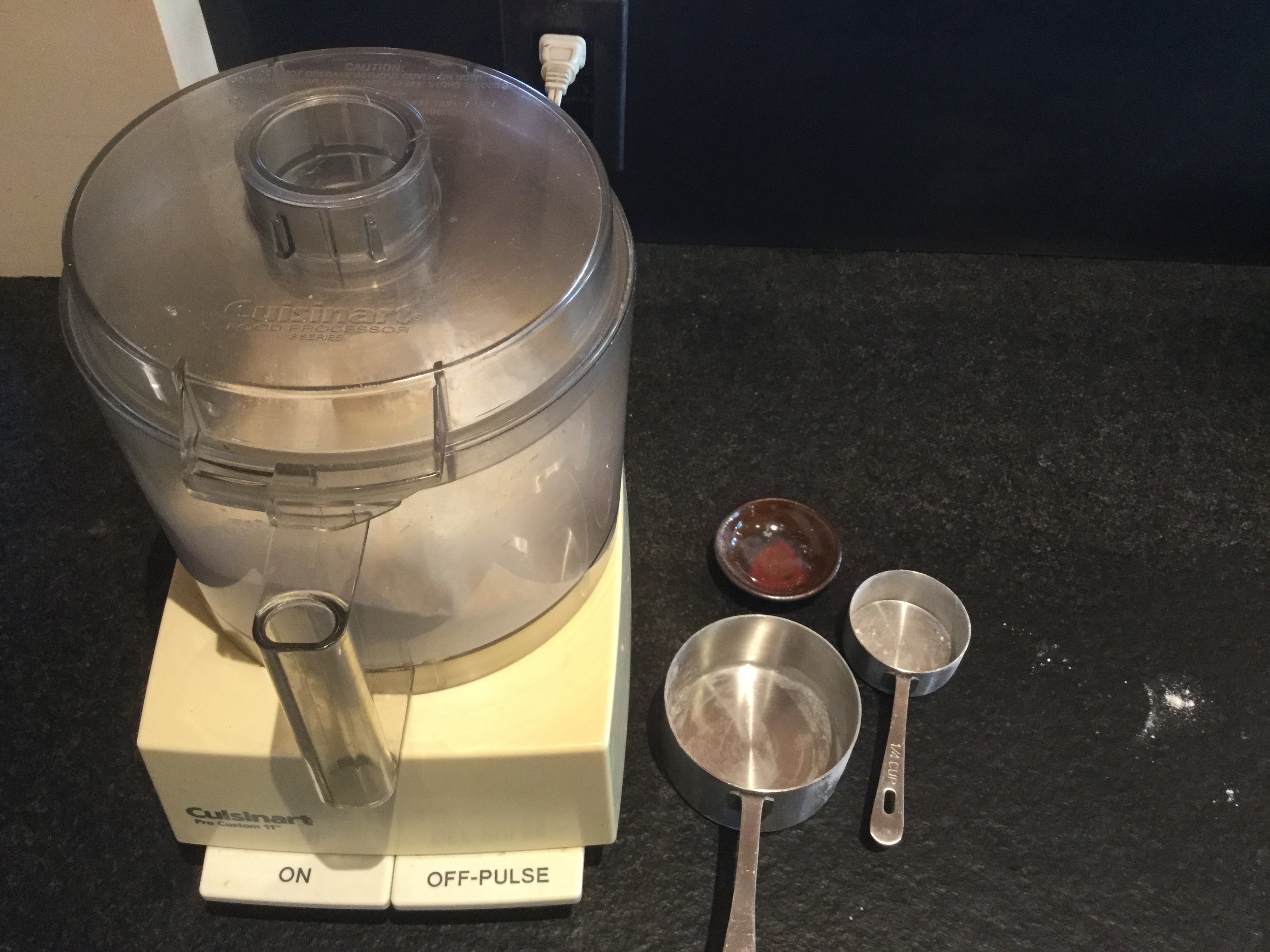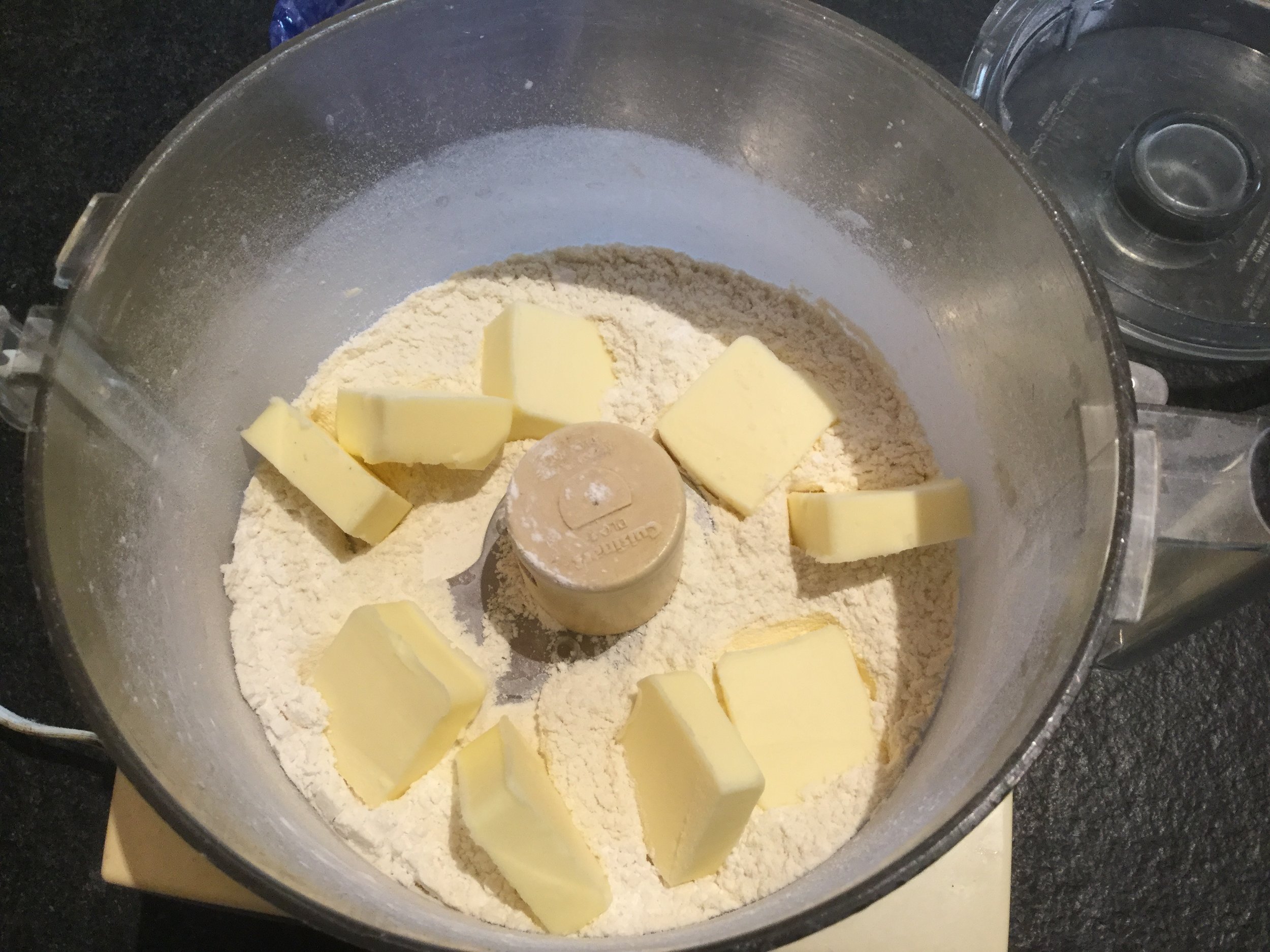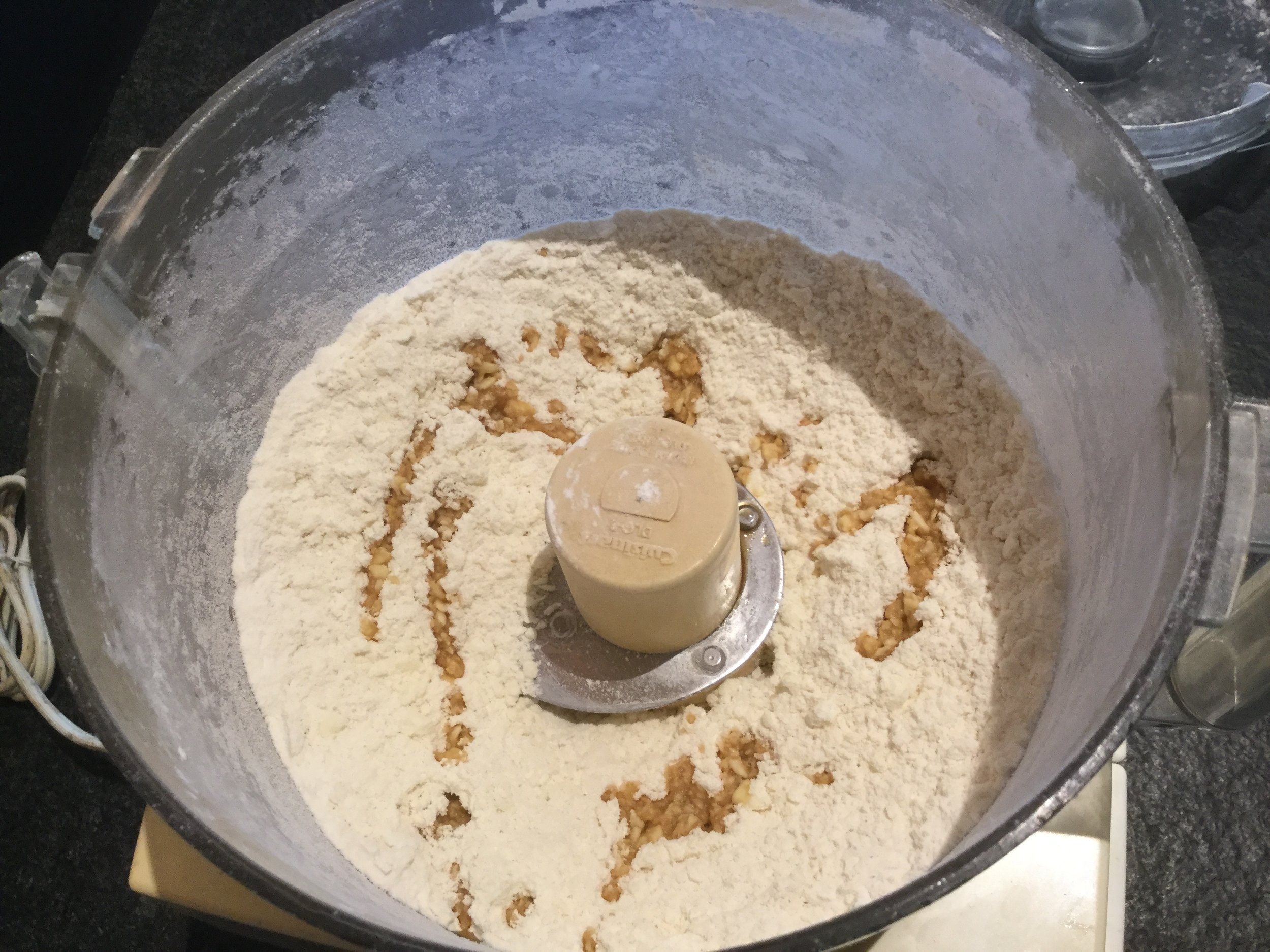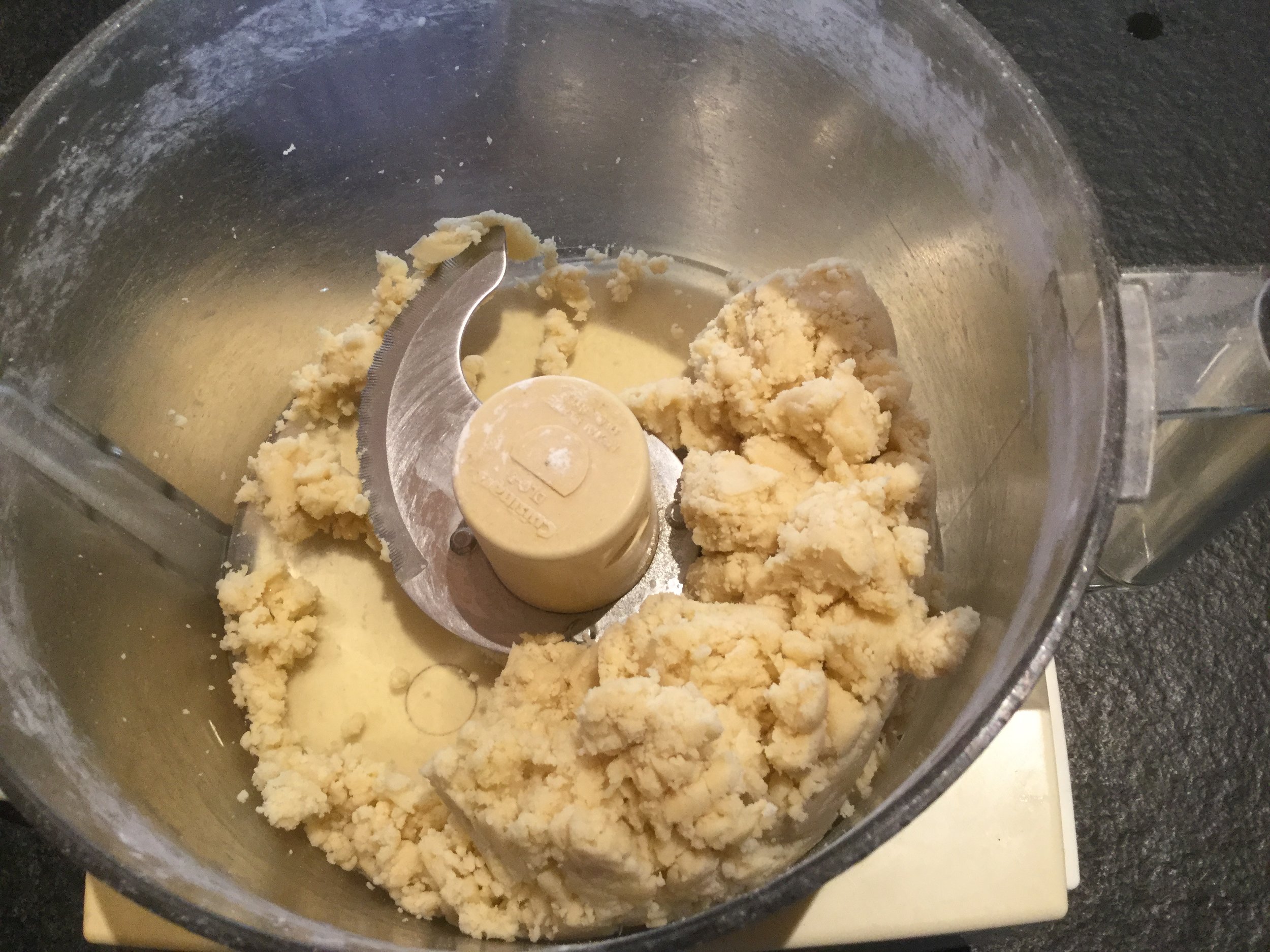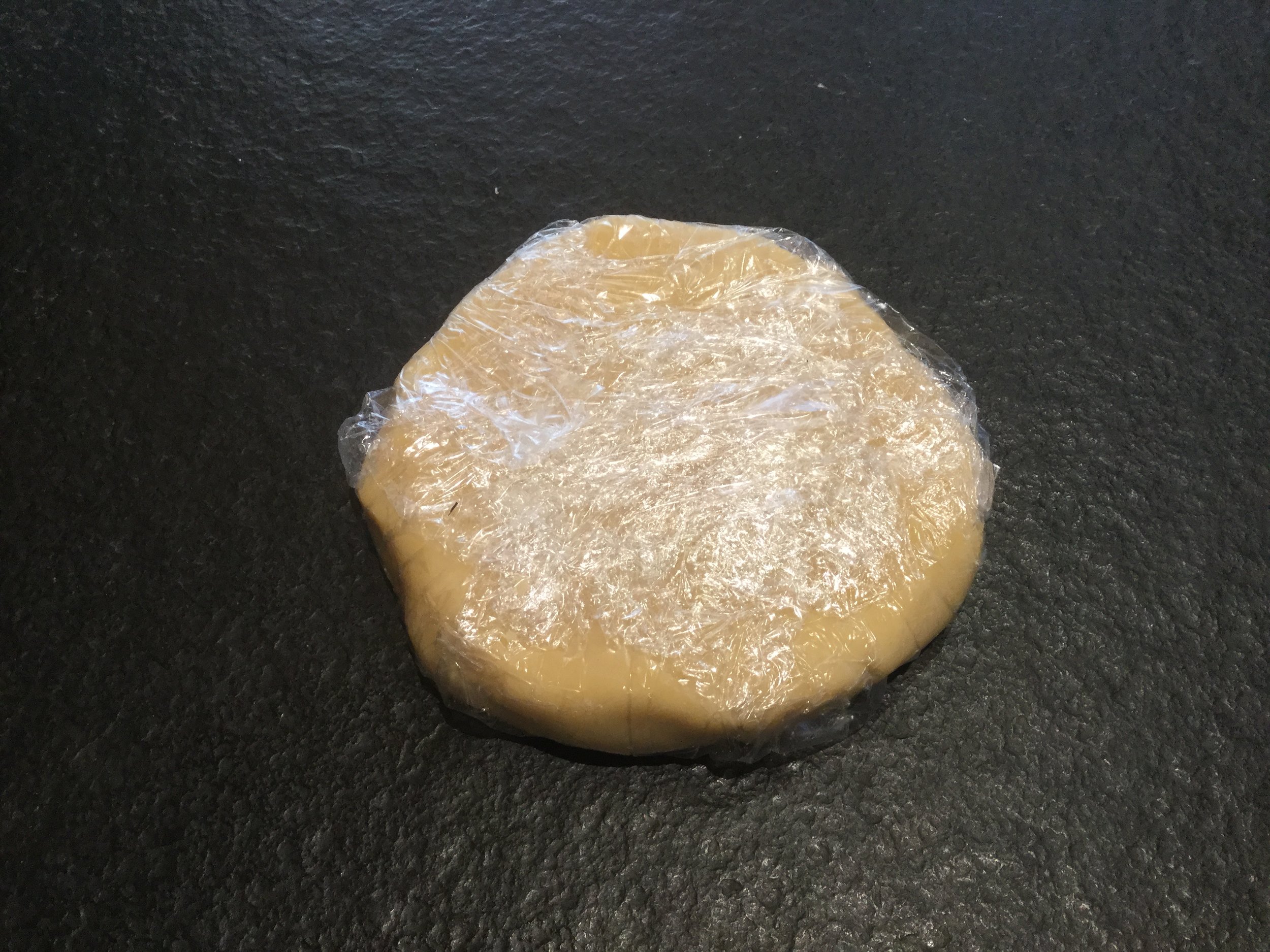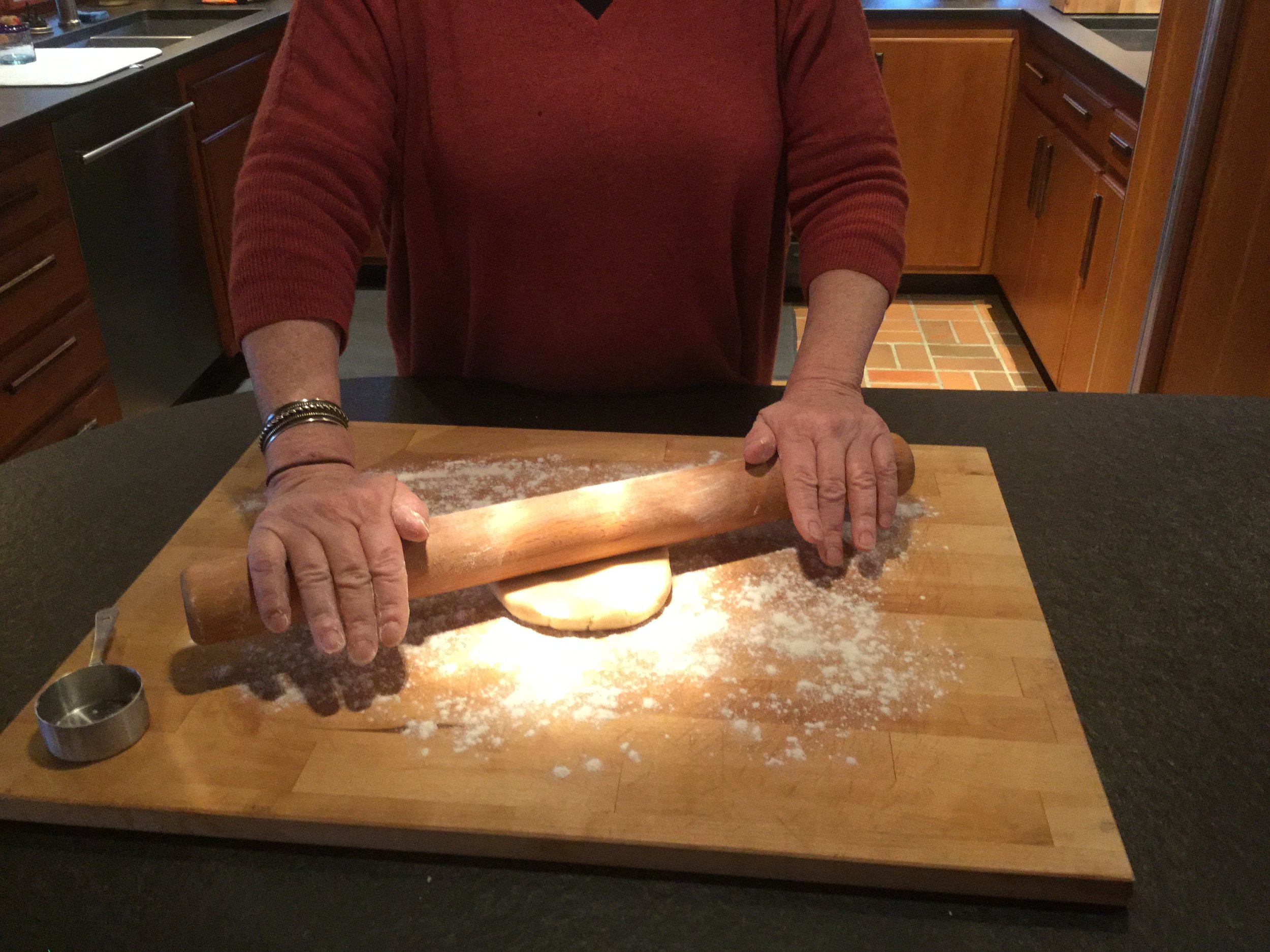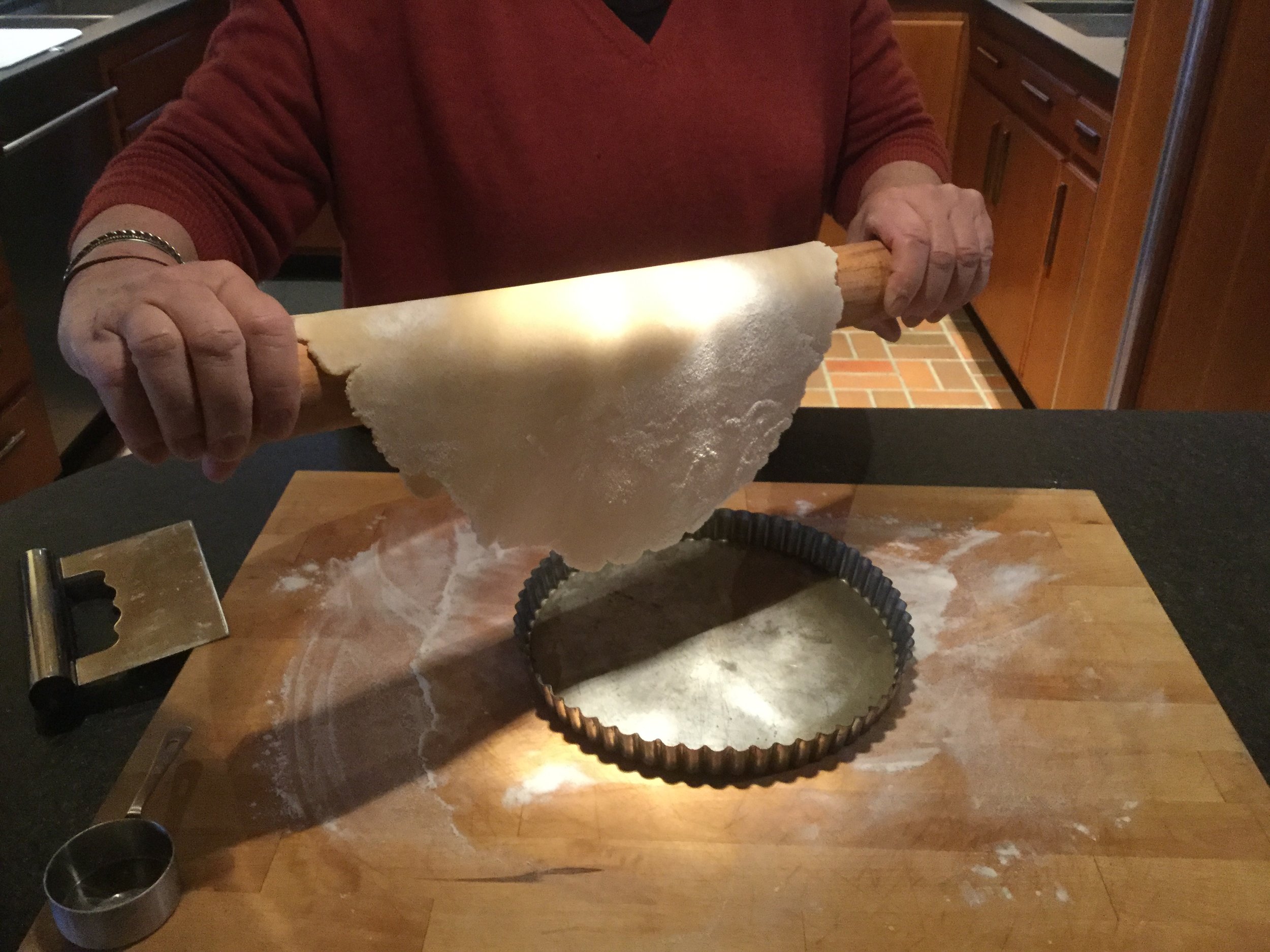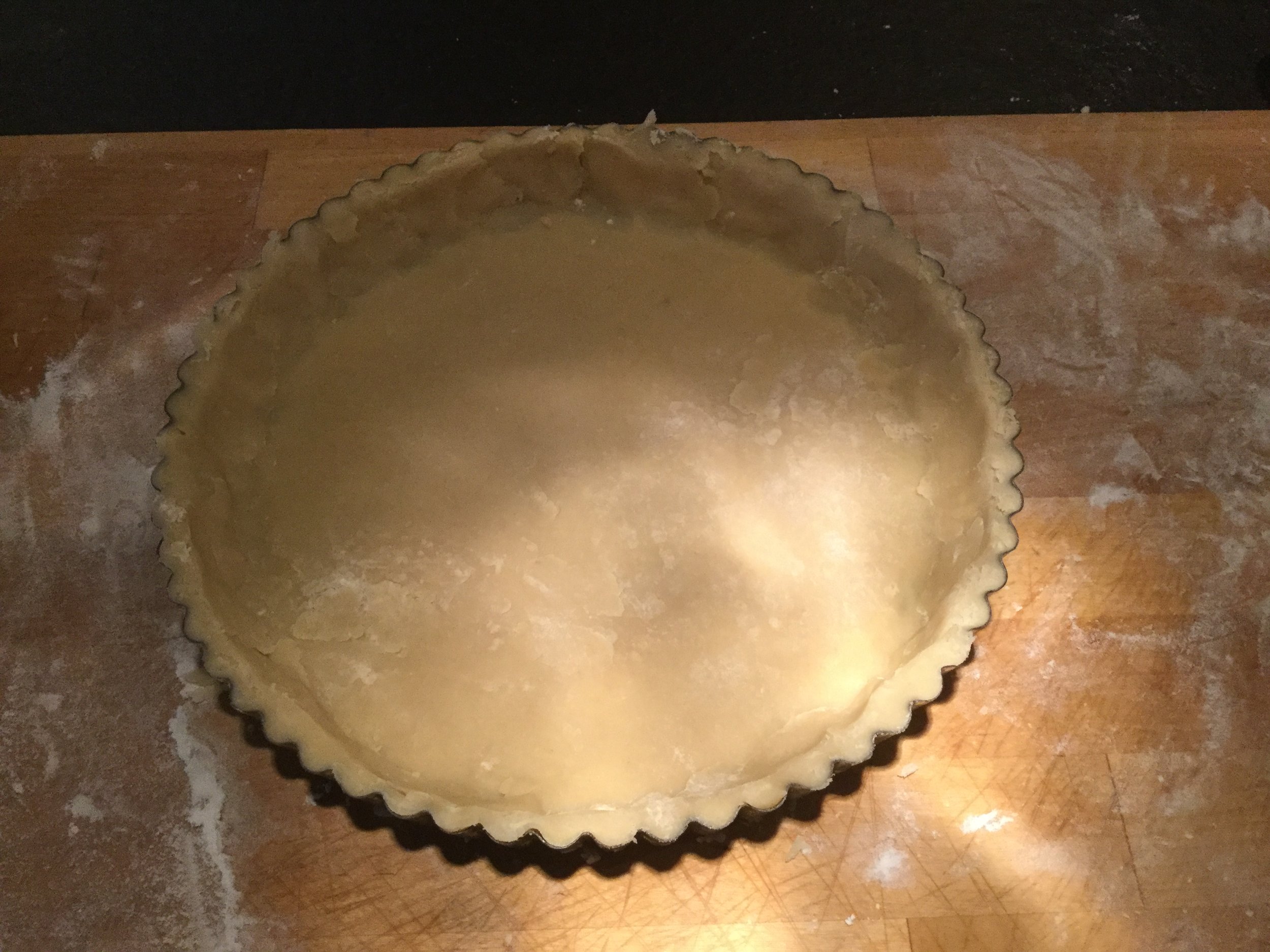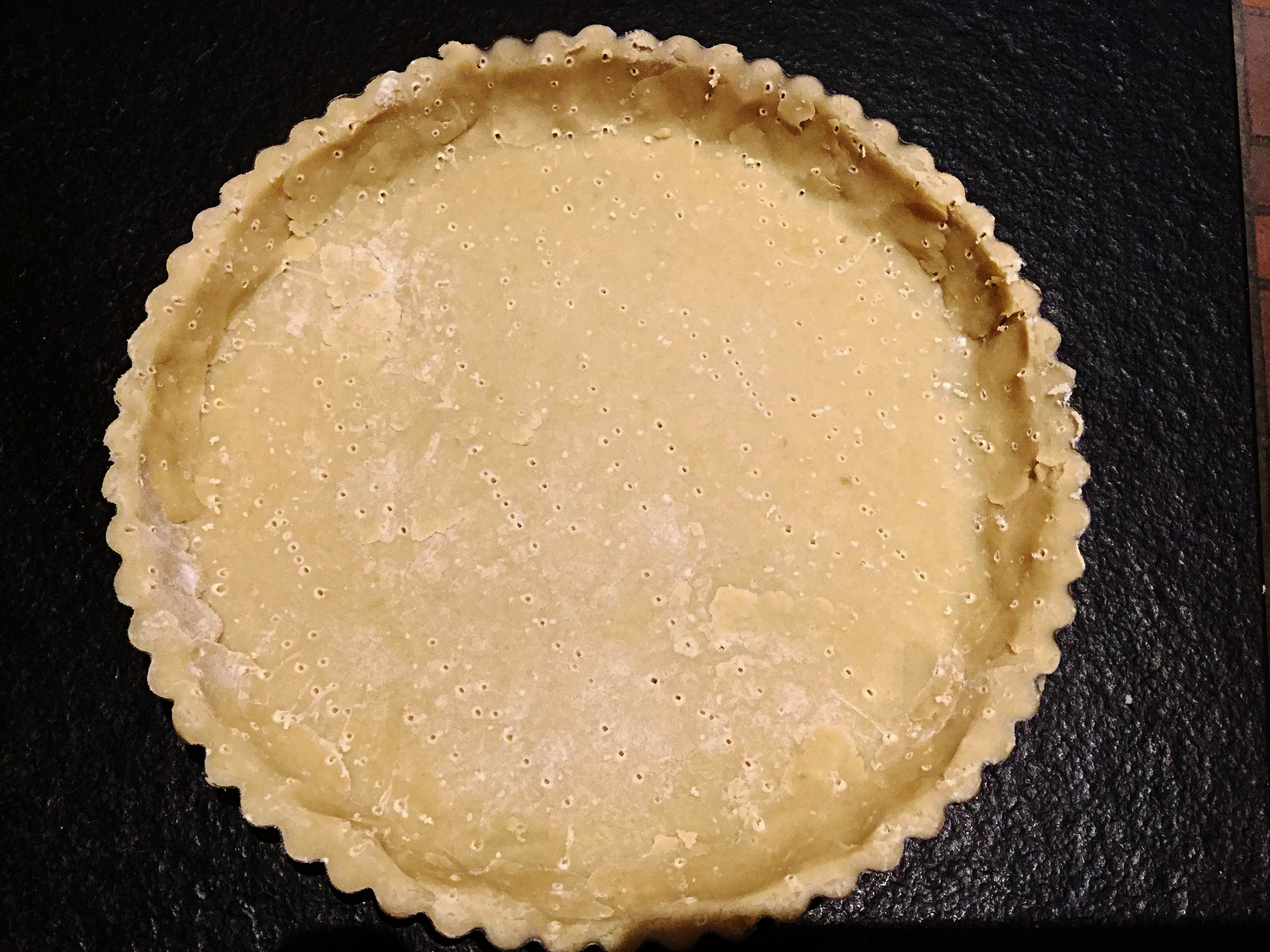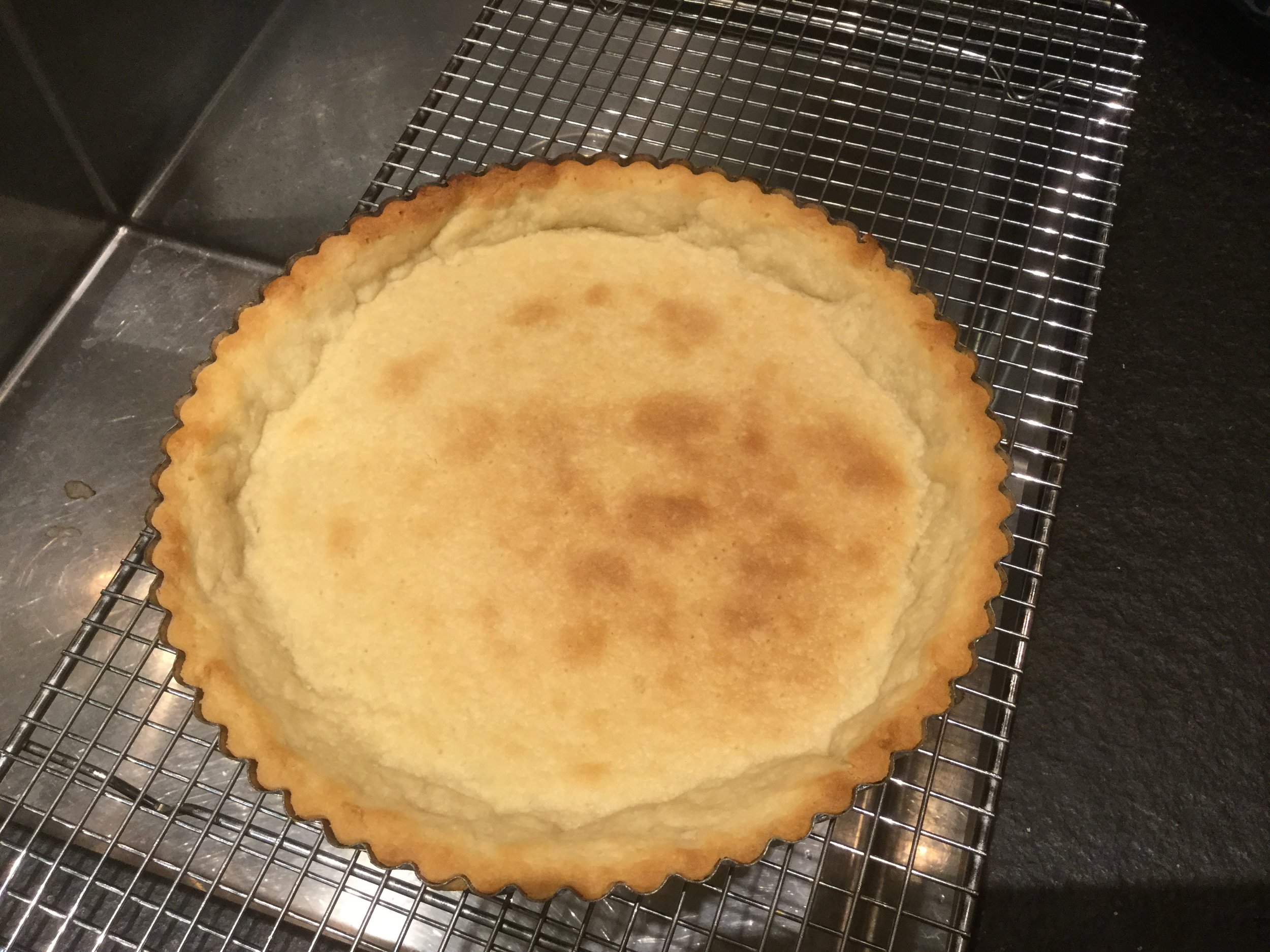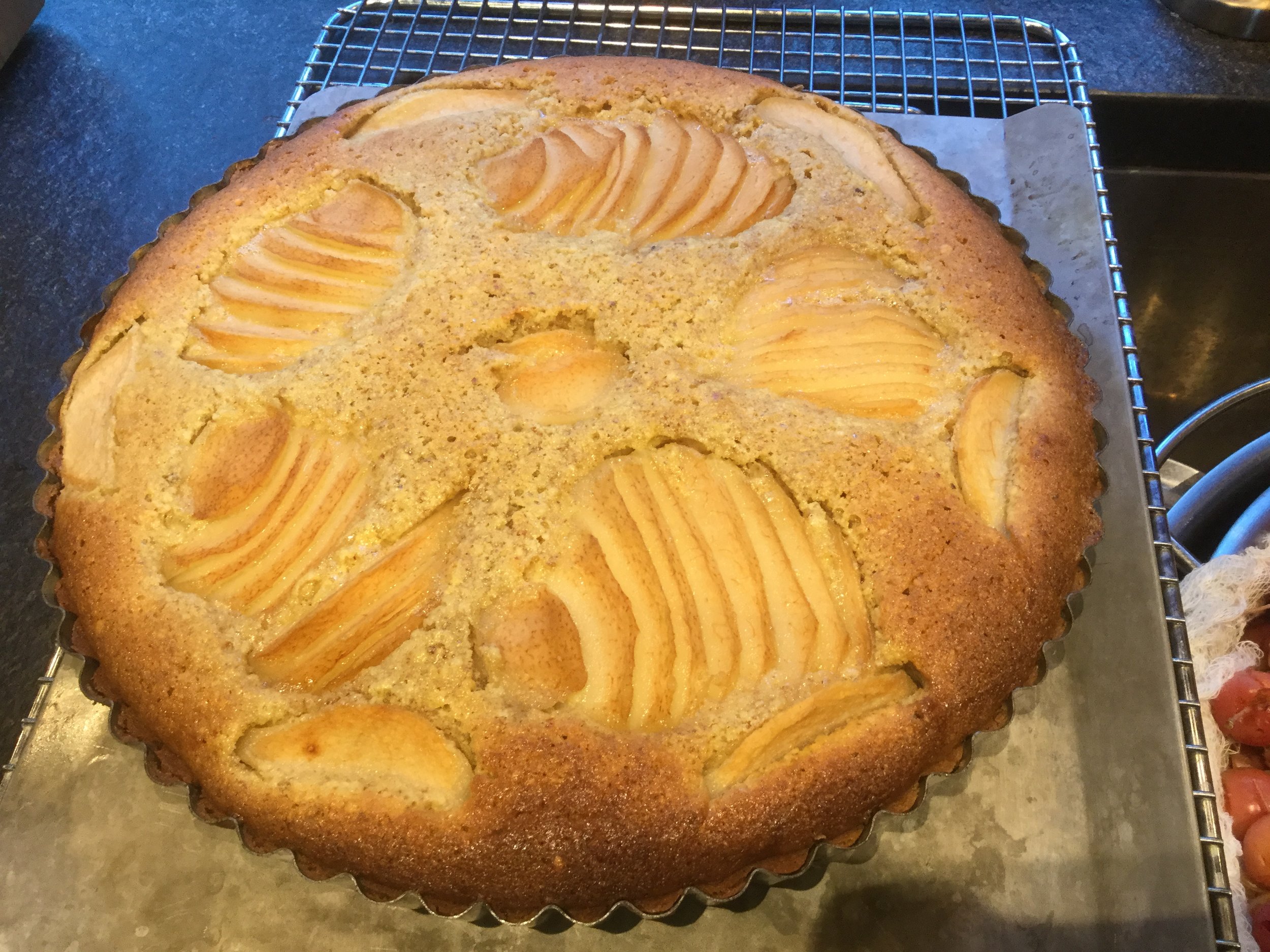We bought some beautiful organic pears the other day and I have been waiting for them to get to the perfect point of ripeness to make this tart. This is a good example of a tart with a blind baked crust and a gently sweet, seasonal filling. It is easy to make and luscious served all by itself, still warm from the oven or at room temperature. Virtually any fruit can be substituted for the pear – cherries, peaches, plums, apples, nectarines are all good. But pear is my favorite!
Start with an easy blind baked tart shell (see blog entry, “Baking Perfectly Blind”). I used a 9” square tart tin this time, but you can use any shape you like. The recipe for the tart dough given in “Baking Perfectly Blind” is enough for any tin 9” – 10”.
Here’s the filling recipe:
- 1 cup whole raw almonds
- ½ cup organic sugar
- ½ tsp. Kosher salt
- 1 whole egg
- 1 cup heavy cream
- 1 tsp. almond extract
Make the filling: Place almonds sugar and salt in the bowl of a food processor. Pulse the ingredients to a fine meal. Add the cream, the egg, and the almond extract and process briefly to mix thoroughly.
Next halve, core, peel, and slice the pears and place them artistically on your blind baked shell – spreading them a little - like a fan, if you want to. Finally, pour the filling around the pears and smooth it into spaces and corners.
Bake at 350 for about 30 minutes, turning front to back about half way through. Remove from the oven when the tart is nicely browned and smells heavenly. Cool on a rack.
Viola!
This was one of the most popular desserts at our restaurant. We served it with warm caramel sauce, Chantilly cream and toasted, sliced almonds. You can imagine. But really, plain is so, so good. Either way, eaters win!

